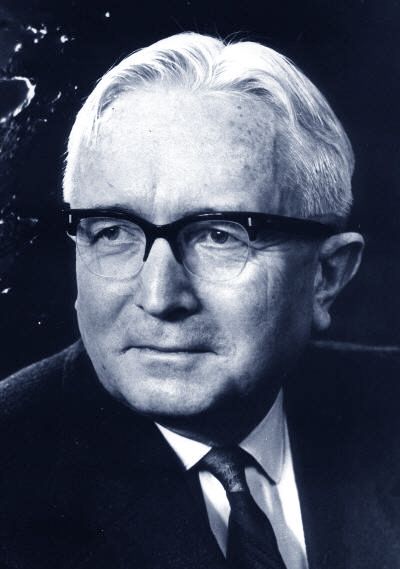- 4.4.1914 – 23.6.1993
Zdeněk Kopal, the most famous Czech astronomer, who made his mark on the history of science through his research into binary stars and the mathematical analysis of astronomical phenomena. He spent most of his professional life in the United Kingdom and the United States, worked as a professor at Cambridge and Harvard, and was a prominent member of the International Astronomical Union. Besides studying the stars, he was also involved in the preparations for the Apollo mission and man’s first landing on the Moon.
The world-famous astronomer and mathematician Zdeněk Kopal was born on 4th April 1914 in Litomyšl to Josef Kopal, a philologist and later professor at Charles University. From an early age he was always fascinated by the natural sciences and, with his father’s support, conducted scientific experiments when he was still a young child. At the age of 14 he built his own telescope and started to carry out his own research into variable stars. After the family moved to Prague, at the tender age of fifteen Zdeněk Kopal became a member of the Czech Astronomical Society and used to visit the Štefánik Observatory, where in just a few years he was appointed chairman of its professional section and began to publish some specialised works. Against his parents’ wishes he wanted to study astronomy at university and enrolled at the Faculty of Science of Charles University to do a course in astronomy, physics and mathematics. Finally, he was able to devote himself fully to his interests. He specialised in mathematical astronomy, translated popular educational books, and observed the stars. After graduating from Charles University he went on to study at Cambridge under Prof. Arthur Eddington. He was still there in 1938 during the signing of the Munich Agreement, after which he decided not to return to Czechoslovakia and to continue his work overseas. He was awarded a scholarship to study at Harvard, where he conducted analyses of the light curves of eclipsing variable stars. During the war he helped teach navigation to American sailors and carried out research into ballistics. His analytical work group also included Norbert Wiener, who would later become the founder of cybernetics. After the war he was appointed professor of numerical analysis and earned worldwide acclaim for his study of variable stars and binary stars. He provided mathematical proof of their shape and other properties based on photometric data. His name carried such weight that during the 1950s NASA appointed him the head of a project to compile a detailed map of the Moon for the planned Apollo mission. It was his work that led NASA to choose the landing sites for all the Apollo missions that touched down upon the surface of the Moon.
- References
ŠOLCOVÁ, A., KŘÍŽEK, M.: Numerický matematik a astronom Zdeněk Kopal. Pokroky matematiky, fyziky a astronomie, 49/2004, č. 3, str. 244─257
KOPAL, Z. Můj život. Litomyšl 2014
- PH




